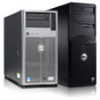Dell PowerEdge XL 5133-4 MXL 10/40GbE Switch IO Module FTOS Command Reference - Page 177
Layer 2, Managing the MAC Address Table, Clearing MAC Address Entries
 |
View all Dell PowerEdge XL 5133-4 manuals
Add to My Manuals
Save this manual to your list of manuals |
Page 177 highlights
13 Layer 2 The Aggregator supports CLI commands to manage the MAC address table: • Clearing MAC Address Entries • Displaying the MAC Address Table The Aggregator auto-configures with support for Network Interface Controller (NIC) Teaming. Note: On an Aggregator, all ports are configured by default as members of all (4094) VLANs, including the default VLAN. All VLANs operate in Layer 2 mode. You can reconfigure the VLAN membership for individual ports by using the vlan tagged or vlan untagged commands in INTERFACE configuration mode. See VLAN Membership for more information. Managing the MAC Address Table Note: The tasks for managing the MAC address table that are described in this section can be performed only if the Aggregator is configured to operate in stacking mode. See Configuring a Switch Stack. On an Aggregator in stacking mode, you can manage the MAC address table by: • Clearing MAC Address Entries • Displaying the MAC Address Table Clearing MAC Address Entries Learned MAC addresses are entered in the table as dynamic entries, which means that they are subject to aging. For any dynamic entry, if no packet arrives on the switch with the MAC address as the source or destination address within the timer period, the address is removed from the table. The default aging time is 1800 seconds. You can manually clear the MAC address table of dynamic entries by using the clear mac-address-table dynamic command. Note: On an Aggregator, you cannot manually configure static MAC addresses. A static entry is not subject to aging. Layer 2 | 163















